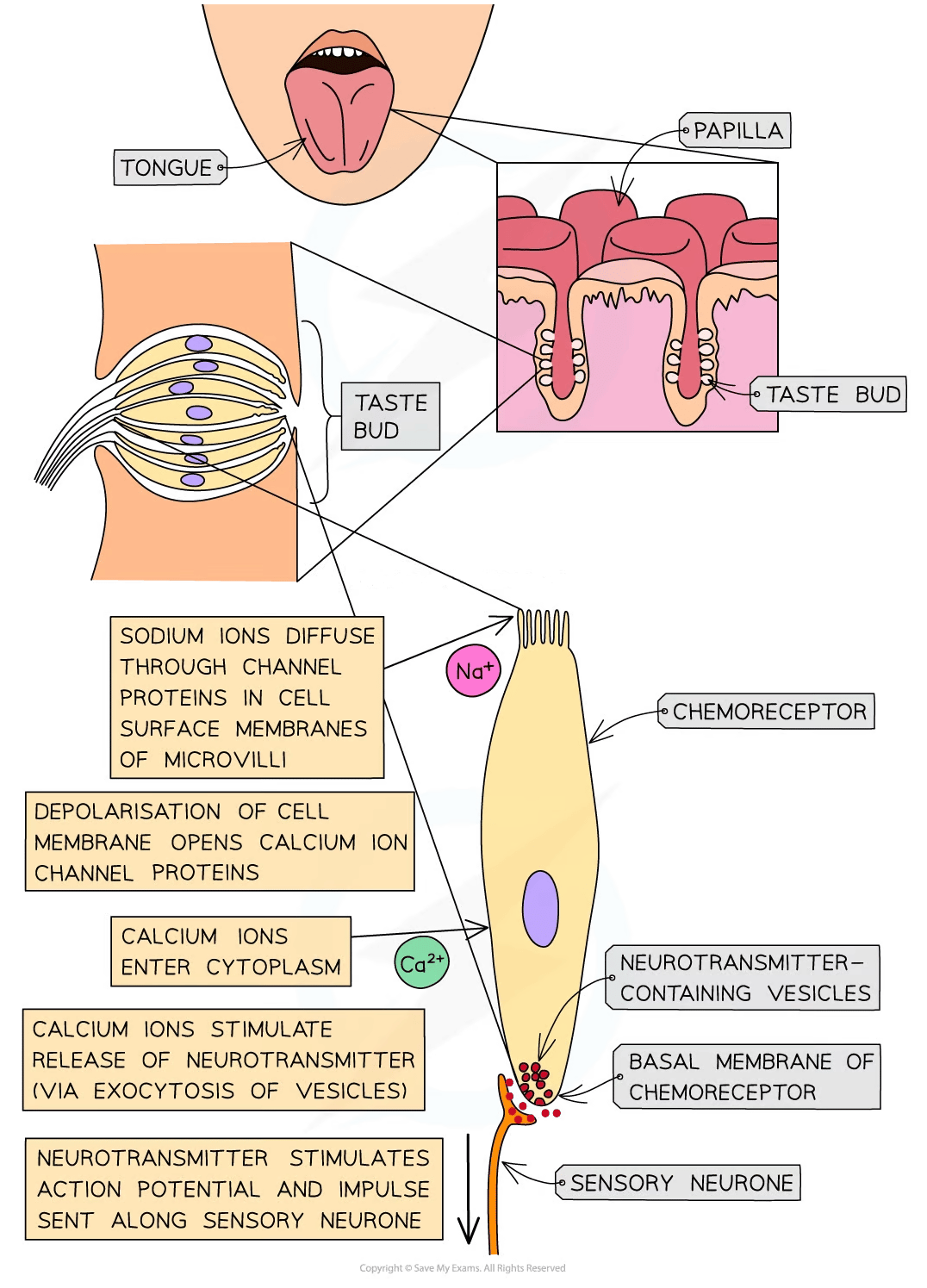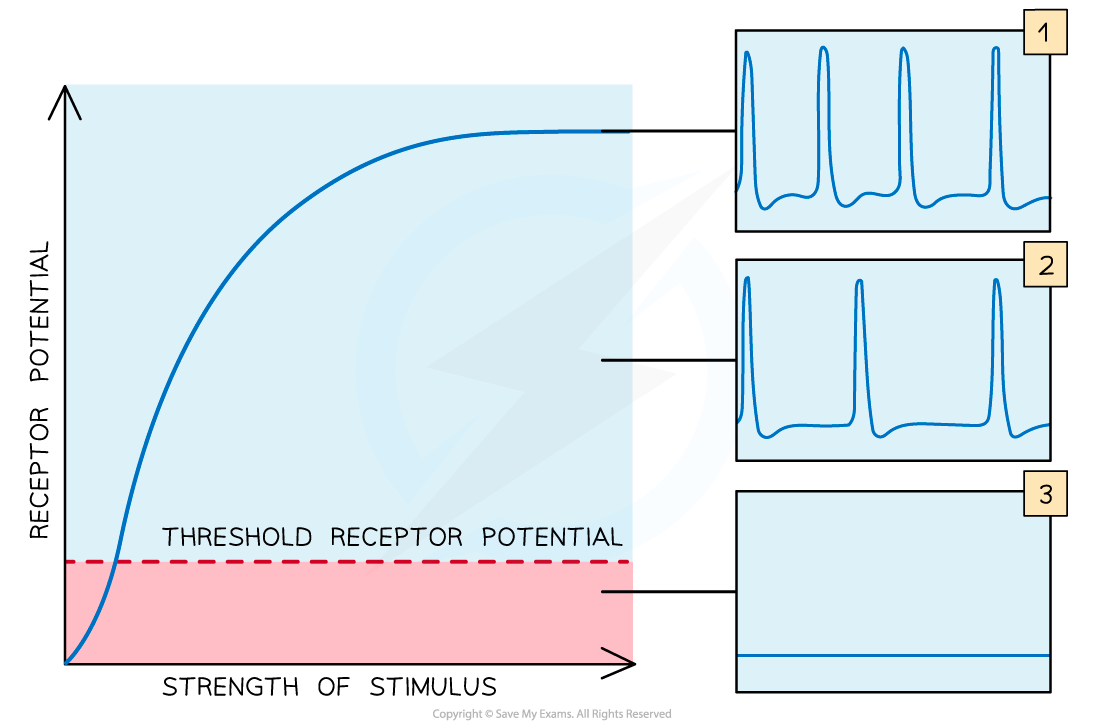Sequence of Events Resulting in an Action Potential (Cambridge (CIE) A Level Biology): Revision Note
Exam code: 9700
Sequence of events resulting in an action potential
The surface of the tongue is covered in many small bumps known as papillae
The surface of each papilla is covered in many taste buds
Each taste bud contains many receptor cells known as chemoreceptors
These chemoreceptors are sensitive to chemicals in food and drinks
Each chemoreceptor is covered with receptor proteins
Different receptor proteins detect different chemicals
An example of the sequence of events that results in an action potential in a sensory neurone
Chemoreceptors in the taste buds that detect salt (sodium chloride) respond directly to sodium ions
If salt is present in the food (dissolved in saliva) being eaten:
Sodium ions diffuse through highly selective channel proteins in the cell surface membranes of the microvilli of the chemoreceptor cells
This leads to the depolarisation of the chemoreceptor cell membrane
The increase in positive charge inside the cell is known as the receptor potential
If there is sufficient stimulation by sodium ions and sufficient depolarisation of the membrane, the receptor potential becomes large enough to stimulate voltage-gated calcium ion channel proteins to open
As a result, calcium ions enter the cytoplasm of the chemoreceptor cell and stimulate exocytosis of vesicles containing neurotransmitters from the basal membrane of the chemoreceptor
The neurotransmitter stimulates an action potential in the sensory neurone
The sensory neurone then transmits an impulse to the brain

When receptors (such as chemoreceptors) are stimulated, they are depolarised
If the stimulus is very weak or below a certain threshold, the receptor cells won’t be sufficiently depolarised and the sensory neurone will not be activated to send impulses
If the stimulus is strong enough to increase the receptor potential above the threshold potential then the receptor will stimulate the sensory neurone to send impulses
This is an example of the all-or-nothing principle
An impulse is only transmitted if the initial stimulus is sufficient to increase the membrane potential above a threshold potential
Rather than staying constant, threshold levels in receptors often increase with continued stimulation, so that a greater stimulus is required before impulses are sent along sensory neurones


Examiner Tips and Tricks
Some receptors, like the chemoreceptors described above, are specialised cells that detect a specific type of stimulus and affect the sensory neurone’s electrical activity. Other receptors are just the ends of the sensory neurones (for example, many types of touch receptors).

Unlock more, it's free!
Did this page help you?